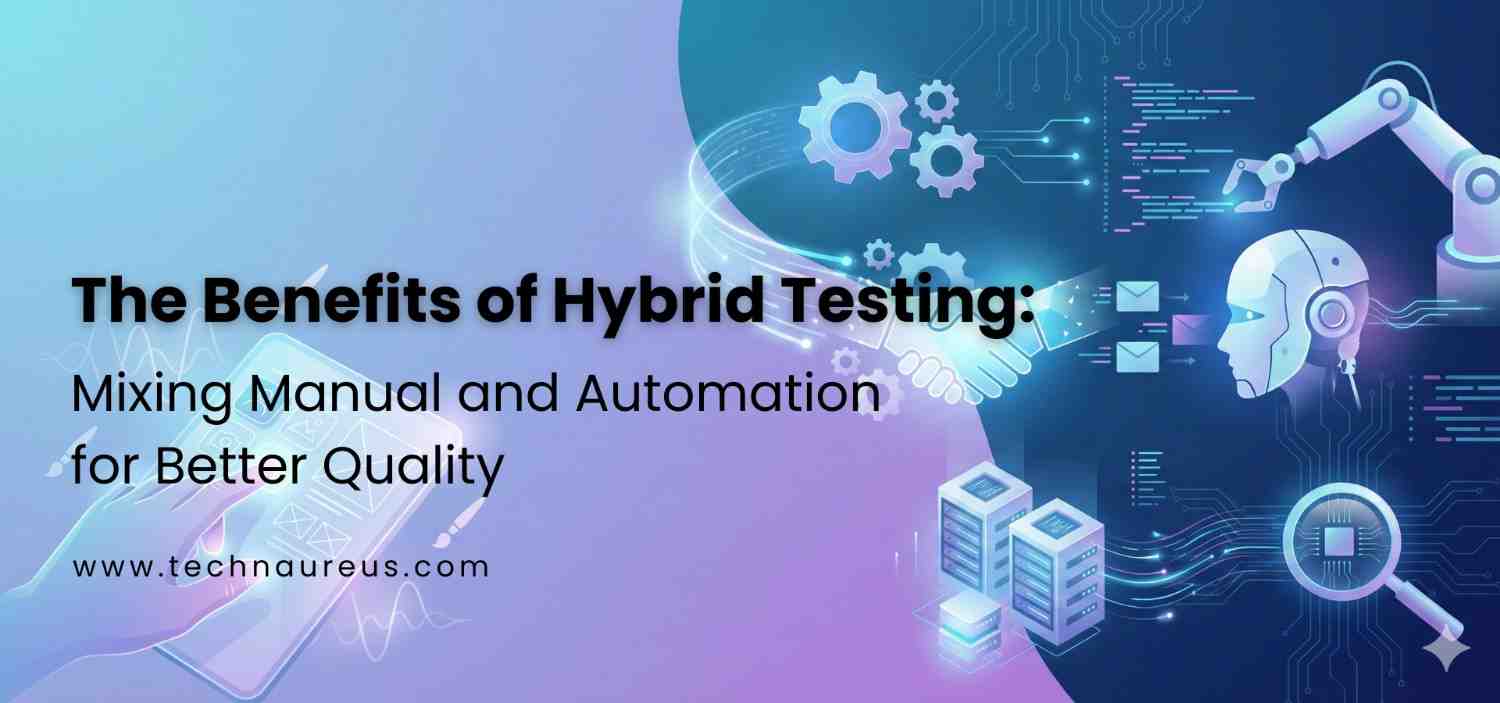Shringa KMNov. 24, 2025
“Have you ever run an automation test and later found a small issue that only a human could notice? Or spent a long time doing the same manual steps that a tool could finish much faster? That’s exactly why hybrid testing is important. It combines the speed of automation with the careful thinking of manual testing. Together, they help teams find more bugs, work faster, and deliver better-quality software than using either method alone.”
Hybrid testing is a testing strategy where certain scenarios are handled manually, while repetitive, high-volume, or time-sensitive tasks are automated.
Think of it as a teamwork model:
Together, they ensure products are both technically strong and user-friendly.
Software development is evolving rapidly. Frequent releases, agile sprints, and CI/CD pipelines demand constant testing. Relying only on manual or only on automation makes the QA process imbalanced.
Hybrid testing helps teams adapt by providing:
Automation helps cover large sets of repetitive tests like regression, smoke, and API tests.
Manual testing focuses on areas where human judgment is needed:
Together, they increase test coverage far more than any single approach.
Automated scripts run quickly and repeatedly, reducing the time spent on routine checks.Meanwhile, manual testing ensures new features behave correctly during early development.
This combination allows teams to catch issues early and release products faster with confidence.
Automation ensures consistency—scripts perform the same steps every time without errors.
But only a human tester can notice subtle issues like:
Hybrid testing ensures accuracy and user-friendliness.
Building full automation for every scenario is costly and unnecessary.
Hybrid testing ensures automation is used only where it truly adds value.
For example:
This avoids overspending on automation while keeping efficiency high.
Hybrid testing encourages communication between testers, developers, analysts, and product owners.
Manual insights help improve automated scripts, while automation results help identify areas needing deeper manual exploration.
This collaborative environment strengthens the overall QA process.
Modern applications change frequently.
Automation alone can struggle with constantly changing UI elements.
Manual testing bridges the gap by checking new or unstable features while automation focuses on stable parts.
This makes hybrid testing highly adaptive in agile environments.
A QA team is testing the order creation and delivery tracking feature of a goods delivery app. Since thousands of users rely on this feature daily, the team needs both automation and manual testing to ensure accuracy and smooth performance.
Automation scripts are created to test all the repeated, predictable actions such as:
These automated tests help quickly confirm that every new build does not break the main delivery flow.
Manual testers focus on real-world behaviors and unpredictable scenarios that automation can't fully mimic, such as:
Manual testing also checks the user experience, ensuring that messages, alerts, and screen transitions make sense to real customers.
Together, hybrid testing helps the team deliver a more reliable, user-friendly, and stable goods delivery experience, especially during peak usage like weekends, sales, and festivals.
As AI-based tools and smart automation grow, hybrid testing will become even more powerful.AI will handle adaptive and predictive testing, while humans will continue to provide direction, creativity, and user understanding.
Hybrid testing is not just a trend—it’s a proven approach that blends speed, accuracy, and human intelligence. By combining manual and automation testing, organizations can deliver software that is not only bug-free but also intuitive and user-centered.
For QA teams, hybrid testing offers flexibility, efficiency, and a smarter way to ensure quality in every release.
It increases coverage, reduces missed bugs, speeds up testing, and provides a balanced view of how the product really behaves. The mix ensures that both functional accuracy and user experience are validated.
Yes, Mobile apps benefit greatly from hybrid testing. Automation tests repetitive flows like login or checkout, while manual testing checks gestures, design issues, responsiveness, and real-device behaviors.
Yes, in most cases. Automation handles routine tasks quickly, and manual testing focuses on critical areas. This balance increases coverage without slowing down the release cycle.
Yes. Applications with multiple integrations, APIs, user roles, or environments benefit greatly because automation handles repetitive paths, while manual testing checks complex interactions and unexpected behaviors.
Teams usually automate stable, repetitive, high-volume scenarios and keep manual testing for new, changing, or exploratory tasks. The decision is based on risk, effort, frequency, and business impact.

0